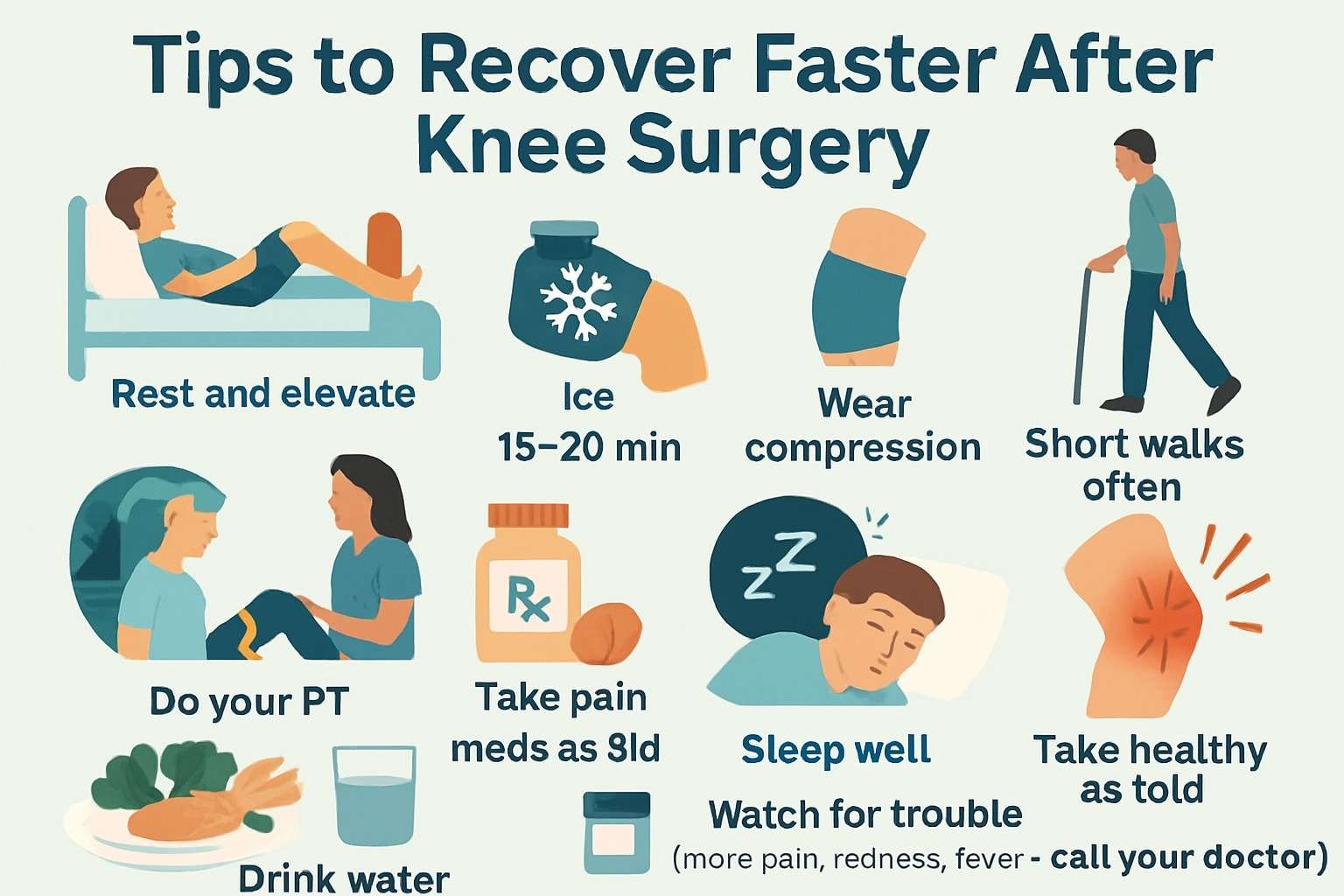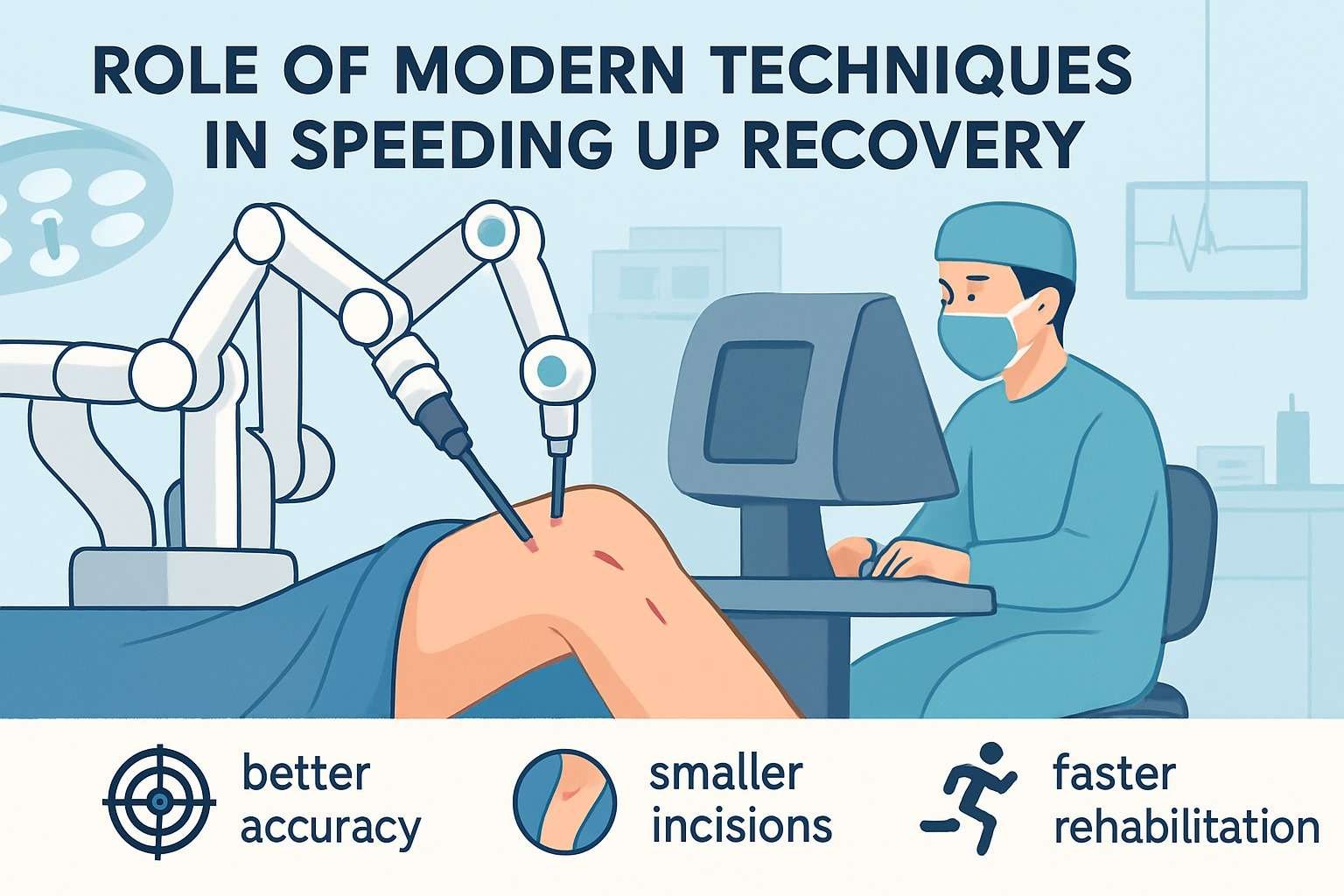Recovering from knee surgery is a unique experience for every patient. While some regain mobility within weeks, others take longer to resume daily activities. Understanding why some patients recover faster than others after knee surgery can help you or your loved ones prepare better and make informed choices before the procedure. Factors such as age, health condition, physiotherapy, and especially advanced surgical technology play a significant role in determining recovery speed.
Knee surgery has evolved tremendously over the years, offering patients pain-free mobility and an improved quality of life. However, recovery varies from person to person. Some patients return to normal activities in just a few weeks, while others may need months of rehabilitation. The reasons behind this variation depend on multiple medical and personal factors. By understanding these influences, patients can take proactive steps to ensure smoother and faster healing after their knee procedure.
Recovery from knee surgery depends on several critical factors. Let’s explore the main ones below.
The kind of surgery plays a key role in determining how quickly a patient can recover. A total knee replacement involves replacing the entire joint, while a partial knee replacement focuses only on the damaged portion. Another major advancement is robotic-assisted knee replacement, which ensures better precision and minimal tissue damage. Because of this accuracy, robotic surgery patients typically experience less pain, reduced blood loss, and faster recovery. These advantages of robot-assisted knee replacement make it a preferred choice among modern orthopedic specialists.
Age and general health condition are crucial in recovery speed. Younger patients with strong immunity and active lifestyles heal faster compared to elderly individuals with existing conditions such as diabetes, hypertension, or obesity. Managing these health issues before surgery improves recovery outcomes significantly. Maintaining good heart health, managing blood sugar, and ensuring optimal body weight all contribute to a smoother healing process.
Preoperative fitness, or prehabilitation, is often underrated but vital. Patients who regularly exercise and strengthen their leg muscles before surgery tend to bounce back faster afterward. Flexibility and muscle strength improve joint stability, making it easier to perform post-surgery exercises. Incorporating simple routines like walking, stationary cycling, or light resistance training before surgery can dramatically shorten recovery time.
Physiotherapy plays an indispensable role in the healing journey. Patients who strictly follow their physiotherapist’s plan regain movement more quickly and reduce the risk of stiffness. Early mobilization — like walking with support within the first few days — promotes circulation and prevents complications such as blood clots. Regular guided sessions help rebuild muscle strength, restore flexibility, and support long-term joint health. Consistency is the key to achieving better results.
The skill of your orthopedic surgeon and the technology they use can make a big difference. Experienced surgeons who specialize in robotic and minimally invasive techniques ensure greater precision and faster healing. Advanced technology such as robotic guidance minimizes tissue trauma and allows for personalized implant positioning, leading to quicker recovery and better joint alignment. The advantages of robotic knee replacement also include reduced hospital stays and lower post-surgical discomfort.
A positive mindset can work wonders. Patients who stay motivated and adhere to their surgeon’s advice recover significantly faster. Emotional resilience and consistent effort in following rehabilitation plans can speed up progress. Remember — healing is both a physical and mental journey.
While recovery speed differs for everyone, most patients experience similar milestones:
Timelines may vary depending on surgery type, age, and dedication to physiotherapy.

Here are some actionable tips to accelerate your recovery journey:
By following these tips, you can help your body heal efficiently and regain strength faster.
While mild discomfort is normal after surgery, certain symptoms require immediate medical attention:
If you experience any of these signs, contact your Knee Replacement Surgeon in Thane immediately for expert guidance and timely care. Regular follow-ups are essential to monitor healing and prevent complications.
Technological innovation has transformed knee surgery outcomes. Robotic and minimally invasive procedures ensure better accuracy, smaller incisions, and faster rehabilitation. These robotic total knee replacement advantages help patients walk within days and return to normal life sooner.
At advanced orthopedic centers like Orthopedic Doctor in Thane, robotic systems assist surgeons in achieving optimal alignment and balance during implant placement. This precision reduces tissue trauma and enhances long-term joint performance.
Patients often report less pain, shorter hospital stays, and improved mobility when robotic techniques are used — reinforcing why choose robotic knee replacement surgery for better recovery outcomes.

Every patient’s recovery journey after knee surgery is unique. While factors like age, health, and attitude influence healing, the expertise of your surgeon and use of advanced technology play a defining role. How robotic knee surgery helps recovery is evident through its precision, minimal invasiveness, and faster rehabilitation outcomes.
If you are considering a knee replacement, consult an experienced specialist to understand what are the benefits of robotic knee replacement surgery and choose the approach best suited to your needs. With expert care, dedication, and the right mindset, a pain-free and active life after knee surgery is well within reach.
WhatsApp us